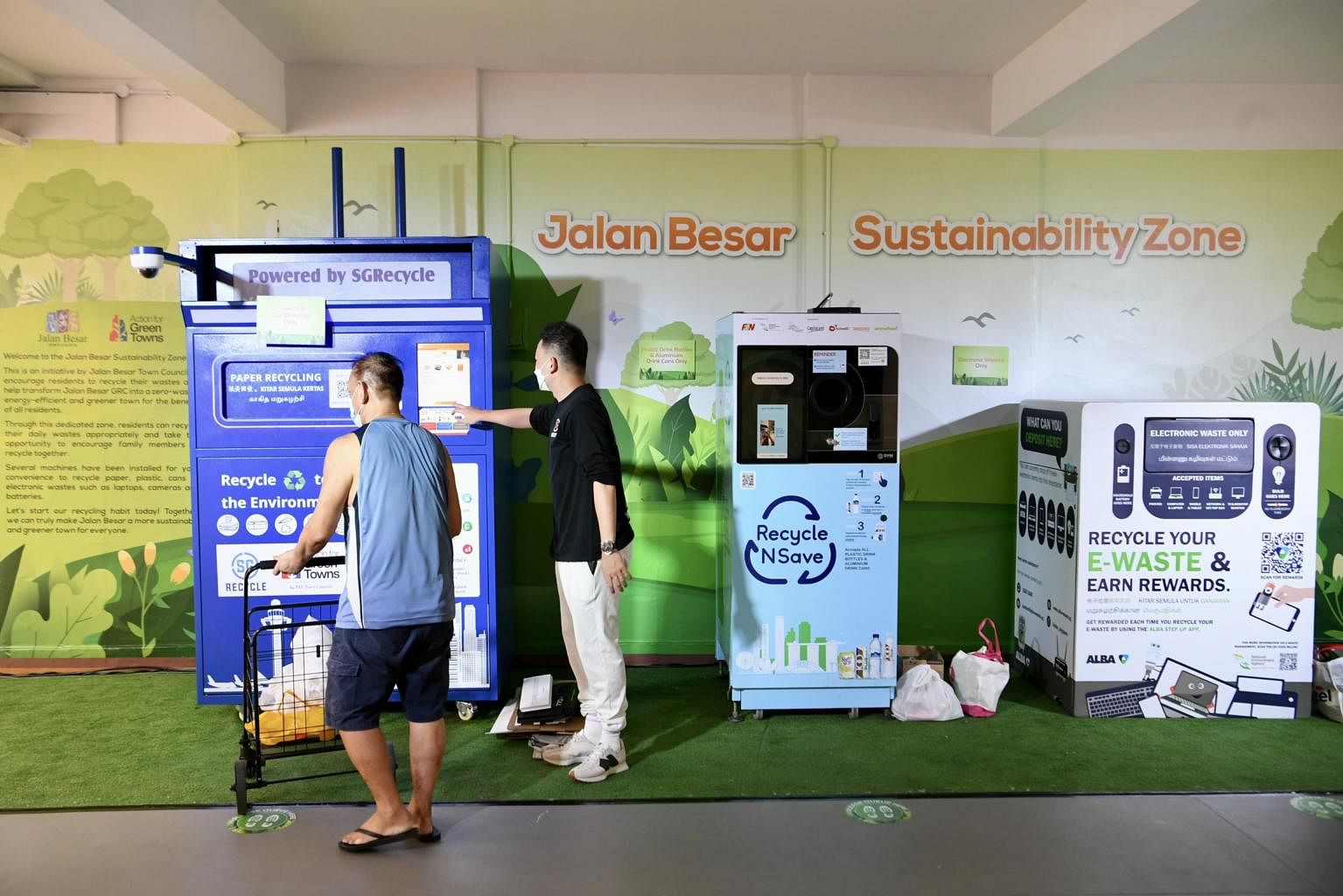
You will get six cents for every 1kg of paper deposited at a recycling machine.
That is the carrot dangled at 78 machines in Housing Board estates islandwide, under a new initiative that aims to bring green living to all 15 towns managed by the People’s Action Party.
The Action for Green Towns drive will see other measures being implemented by 2025, including energy-saving smart sensors in common areas.
Details of how these efforts will be rolled out were announced on Saturday (Dec 4) by the PAP at Block 68 Geylang Bahru, one of 58 locations which already have paper recycling machines.
The remaining 20 will be set up at various locations with high residential footfall such as shopping malls and markets by the end of December.
Mr Lim Biow Chuan, coordinating chairman for PAP town councils, said: “What you will see is that people bring the newspaper down and dump it at (bins at) the void deck. That’s a fire hazard and we will have to see whether a karung guni man comes and collects it.
“So it’s either dump at the dustbin and not earn anything or you can bring it (to the machines), do your part to recycle and earn some money in the process.”
Launched in May, the Action for Green Towns initiative will see MPs from each of the 15 PAP town councils work closely with residents to support sustainability.

Dr Wan Rizal Wan Zakariah, an MP for Jalan Besar GRC who chairs the Action for Green Towns task force, said ambassadors will be deployed at the recycling machines to share more about the sustainability push with residents.
For now, the task force is focusing on raising awareness among residents and engaging with stakeholders such as sustainability experts.
Dr Wan Rizal said: “We are trying to make it as easy as possible for everyone to come on board before we move further.”
Future initiatives could include the greening of lift lobbies and corridors.
To enhance energy efficiency, smart sensors will be installed in common areas with lower traffic, such that when no motion is detected, the lights can be dimmed or turned off.
This measure is expected to reduce up to 62 million kWh of energy usage by 2025, equivalent to the energy used by 14,452 four-room HDB homes in a year.

Meanwhile, the paper recycling machines each aims to recycle one tonne of paper every month.
This will save 17 trees from being cut to obtain the pulp needed to produce one tonne of paper.
Civil servant Lau Chun Wai, 41, a resident of Block 65 that is a three-minute walk from the recycling machine at Block 68, said it is more convenient for him to recycle paper products now.
“During the pandemic, when we work from home or shop online, we would have accumulated paper products like cardboard or documents. In the offices, cleaners can help to clear the trash or we would shred them.
“But at home, we don’t have a shredder, so having such machines can help us recycle,” he noted.
Source The Straits Times






